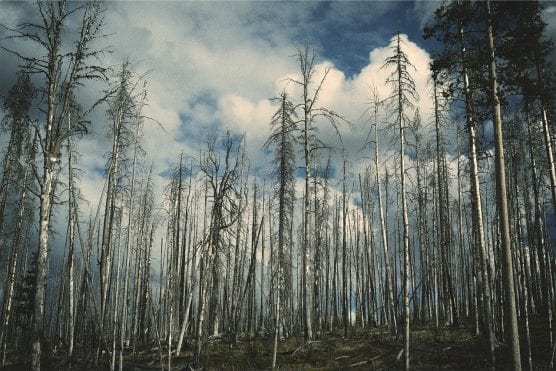The recent and historic California drought had a direct connection to a higher rate of forest die-off, according to a study released Monday.
The study, published in the scientific journal Nature Geoscience, examined the severe dry spell that plagued California, particularly the southern areas of the state, between the years of 2011 and 2017 to better understand its impact on California forests.
What researchers discovered was that the drought, one of the worst in the past 1,000 years, dealt a harsh blow to the health of the state’s forests due to the drying out of the soil.
The team of researchers, co-led by M.L. Goulden, chairman of the Department of Earth System Science at the University of California, Irvine, found that as soil continued to dry from a lack of precipitation and environmental moisture levels declined, forests struggled to survive. This resulted in forest die-off rates going up roughly 55%, an increase the study suggests is both dramatic and deadly.
Scientists also found that recent climate change has made these droughts more extreme when compared to previous years. The study examined the 1987-1992 California drought, and found stark differences between the two events.
“California has a long history of episodic drought and forest die-off,” the study states. “The 1987–1992 period was also quite dry, although tree death in the southern Sierra appears to have been much less extreme.”
The study also suggests that one of the areas of California forests that suffered the most as a result of these droughts are the forest canopies and general vegetation.
The researchers report that these areas are extremely reliant on the moisture of the climate and health of the surrounding tree life. As that health and moisture decline, so too does the health and consistency of forest canopies and vegetation areas. This impact was felt particularly strongly in forests of low elevation.
The study concludes by suggesting that most models predicting how this problem will continue in the future are uncertain. Most, however, can agree that as temperatures rise and droughts continue, forest die-offs will continue to worsen.
Goulden did not immediately respond to a request for comments.
In March, federal hydrologists officially declared California drought-free after more than seven years. The Golden State had experienced some form of drought for 376 consecutive weeks, a period that finally came to an end thanks to a winter of storms that drenched the entire state.
— By Carson McCullough
Like this:
Like Loading...
Related





 Tweet This
Tweet This Facebook
Facebook Digg This
Digg This Bookmark
Bookmark Stumble
Stumble RSS
RSS


























REAL NAMES ONLY: All posters must use their real individual or business name. This applies equally to Twitter account holders who use a nickname.
0 Comments
You can be the first one to leave a comment.